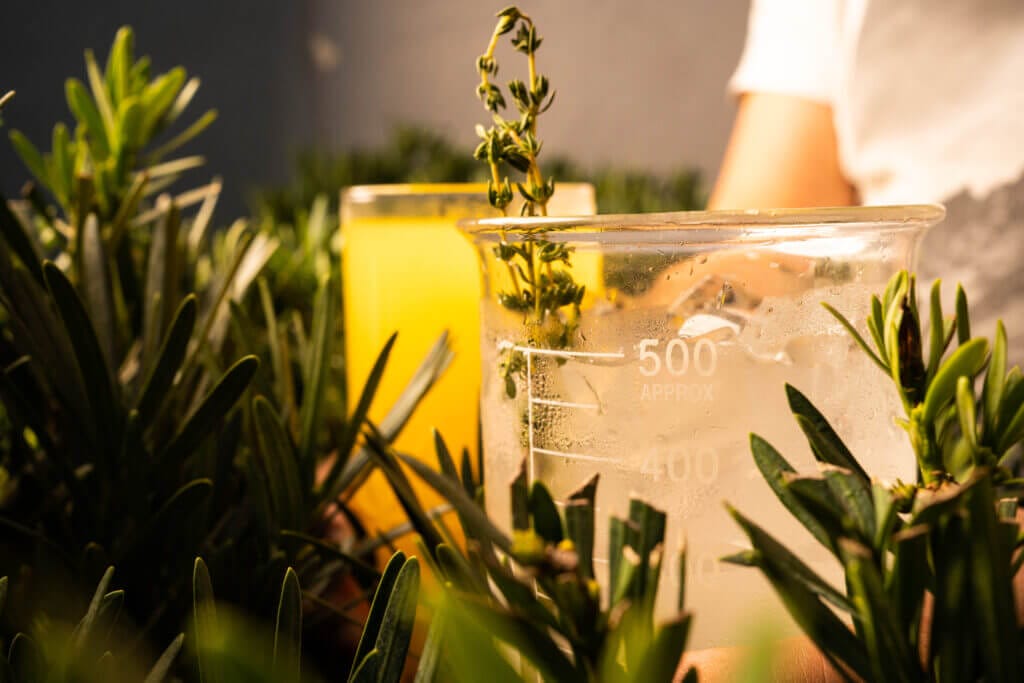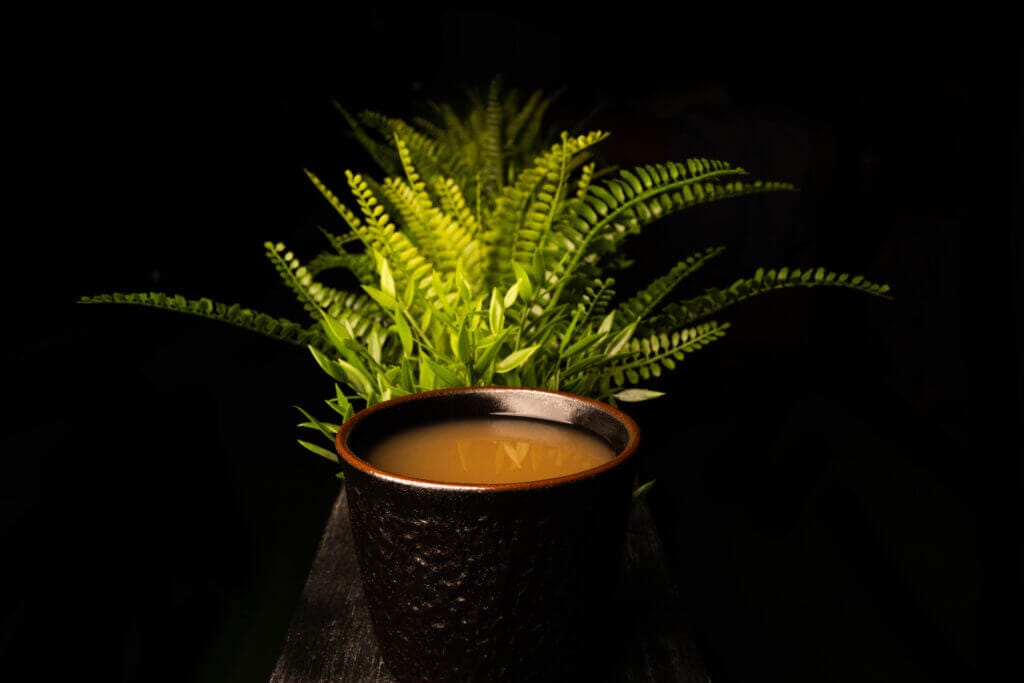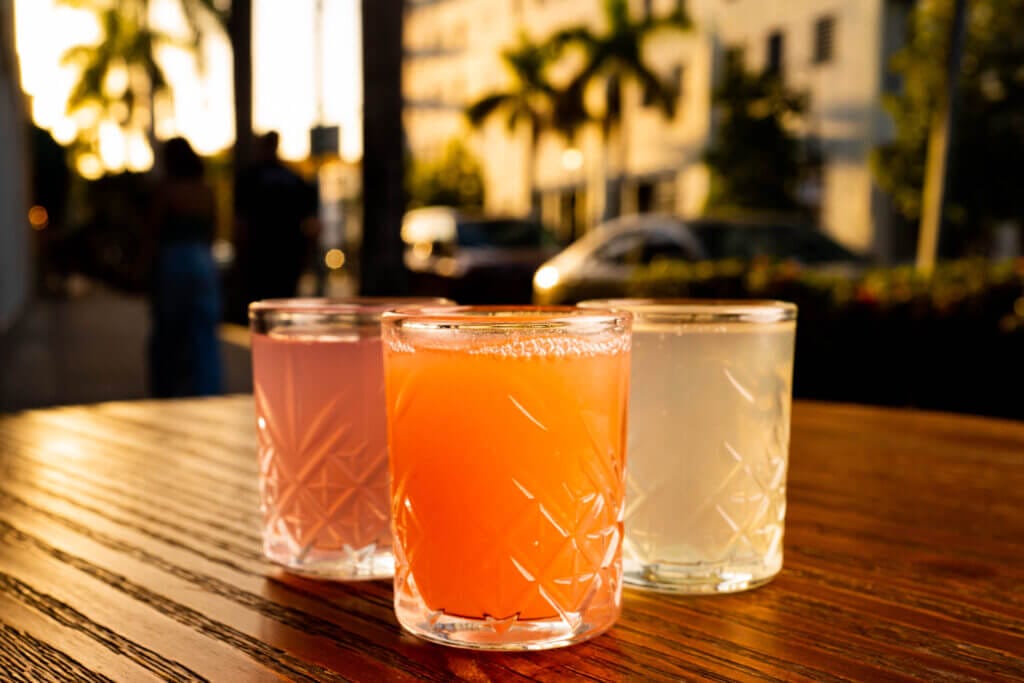Kratom tea and kava tea are the two most popular drinks in kava bars. In the world of herbal infusions, two beverages have been gaining popularity for their unique properties and cultural significance: kratom tea and kava tea. Both of these brews originate from distinct plant species and have been used for centuries in various traditional and cultural practices. In this blog, we’ll delve into the differences between kratom tea and kava tea, exploring their plant science, effects, different varieties, brewing methods, and the places you can find them – kava bars.

Plant Science: Kratom vs. Kava
Kratom (Mitragyna speciosa):
Kratom is derived from the leaves of the Mitragyna speciosa tree, native to Southeast Asia, particularly Indonesia, Thailand, Malaysia, and Papua New Guinea. This evergreen tree belongs to the Rubiaceae family, making it a relative of the coffee plant. Kratom leaves contain alkaloids, most notably mitragynine and 7-hydroxymitragynine, which are responsible for its psychoactive effects.
Kava (Piper methysticum):
Kava, on the other hand, is made from the roots of the Piper methysticum plant, native to the South Pacific islands. It belongs to the Piperaceae family, which also includes black and white pepper. The active compounds in kava are a group of lactones called kavalactones, particularly kavain, dihydrokavain, and desmethoxyyangonin. These compounds give kava its calming and sedative effects.

Effects of Kratom Tea
Kratom tea is renowned for its stimulating and analgesic effects. When consumed in moderate doses, kratom can provide increased energy, enhanced focus, and relief from pain. It’s often used by people seeking a natural alternative to manage chronic pain, boost productivity, or alleviate symptoms of anxiety and depression.
However, it’s important to note that kratom’s effects can vary depending on the strain and dosage. Different strains of kratom, such as Maeng Da, Bali, and Thai, offer varying levels of stimulation and pain relief. Higher doses can lead to sedative effects and may even induce a feeling of euphoria.
Effects of Kava Tea
Kava tea, in contrast, is well-known for its relaxing and anxiety-reducing properties. When consumed, kava induces a sense of calmness and can relieve stress and anxiety. It achieves this by acting as a muscle relaxant and anxiolytic, making it a popular choice among those seeking to unwind or socialize without the typical impairments associated with alcohol.
Kava’s effects are typically milder and more sedative than kratom. While it doesn’t provide the same energizing effects, it can help promote relaxation and improve sleep quality.
Varieties of Kratom and Kava Teas
Kratom Teas:
Red Vein Kratom: Known for its relaxation and pain-relieving properties.
White Vein Kratom: Offers energy and increased focus.
Green Vein Kratom: Provides a balanced blend of stimulation and relaxation.
Kava Teas:
Noble Kava: High-quality kava strains that are traditionally used for their calming effects.
Tudei Kava: Known for being stronger but may cause more side effects.
Instant Kava: A convenient form of kava that dissolves in water for quick preparation.
Brewing Methods
Kratom Tea:
Boil 2-4 cups of water.
Add kratom powder or leaves.
Simmer for 15-20 minutes.
Strain the liquid and serve.
Kava Tea:
Combine kava root powder with cold water or coconut milk.
Knead and strain through a cloth, mesh strainer, or kava strainer bag.
The resulting liquid is ready to be consumed.

Kava Bars: Where to Find These Herbal Brews
Both kratom and kava have gained popularity in the United States and around the world, leading to the emergence of kava and kratom bars where enthusiasts can gather and enjoy these unique brews. These bars often offer a variety of strains and preparations, making them excellent places to explore the world of kratom and kava.
Kava bars typically provide a relaxed and communal atmosphere, often featuring traditional South Pacific decor and music. Patrons can choose from different kava varieties and forms, such as traditional kava, kava shots, or kava cocktails. The kava experience often involves socializing, live music, or even kava ceremonies.
Kratom bars, on the other hand, offer a similar social experience with various kratom strains, often served in tea or capsule form. These bars have become gathering spots for individuals looking to explore the diverse effects of kratom.
In summary, kratom tea and kava tea are two distinct herbal brews originating from different plant species and offering unique effects. Kratom is known for its stimulating and analgesic properties, while kava induces relaxation and reduces anxiety. The varieties, brewing methods, and social settings where these teas are consumed cater to different preferences and needs. Whether you’re seeking a natural energy boost or a calm and relaxing experience, both kratom and kava teas have something to offer, making them fascinating additions to the world of herbal infusions.
Kava: A Journey Through Varieties and Origins
Kava, the soothing elixir from the South Pacific, comes in a captivating array of varieties, each with its unique characteristics and origins. Let’s embark on a journey through the diverse world of kava, where the regions they hail from and the reasons they are named will enthrall your senses.
1. Noble Kava Varieties:
Vanuatu Kava: Known for its smooth and balanced effects, Vanuatu kava is revered for its quality and consistency. It’s often enjoyed for its ability to induce relaxation without excessive sedation.
Fijian Kava: Originating from the paradisiacal islands of Fiji, this kava variety is celebrated for its potent yet manageable calming effects. Fijian kava is known to promote socialization and stress relief.
Tongan Kava: Grown in the Kingdom of Tonga, this kava variety is cherished for its mellow and grounding properties. Tongan kava is an excellent choice for those seeking a gentle sense of relaxation.
2. Unique Kava Cultivars:
Mahakea: Named after the legendary Hawaiian navigator, Mahakea kava offers a taste of the Aloha spirit. It’s appreciated for its mild effects, making it suitable for daytime consumption.
Isa: Isa kava, also known as “Tudei” kava, is native to Vanuatu. It’s renowned for its intense and robust properties, often favored by experienced kava enthusiasts. However, it can be strong and may have more side effects.
Borogu: Hailing from the Pentecost Island of Vanuatu, Borogu kava is celebrated for its well-balanced profile, making it a popular choice among both newcomers and experienced kava drinkers.
3. Kava Blends and Hybrids:
Melomelo: Combining the best of Vanuatu and Fiji kava, Melomelo is a unique blend that offers a harmonious experience. It’s named for the joyous feelings it often imparts.
Nambawan: As its name suggests, Nambawan kava from Vanuatu is considered one of the finest and most sought-after kava varieties in the world. It’s cherished for its exceptional quality and potent effects.
4. Historical and Cultural Significance:
Kava Leka: Named after the legendary chief Leka, this kava variety holds a special place in the cultural heritage of Fiji. It’s often used in traditional ceremonies and gatherings to honor ancestral spirits.
Kava Lawena: Lawena kava is known for its deep cultural significance in Vanuatu. It’s derived from the lateral roots of the kava plant and is associated with rituals and gatherings that foster unity and harmony.
Each kava variety carries the essence of its region, cultivating unique qualities based on its environment and cultural importance. Whether you’re seeking a tranquil escape, a taste of tradition, or a social experience like no other, exploring the world of kava varieties promises a journey rich in flavor and culture.
Visit your nearest kava bar or purveyor of fine kava to savor the nuances of these remarkable kava varieties and discover the stories they tell through their names and origins. Let the mystique of kava take you on a journey to distant lands and ancient traditions, one cup at a time.

